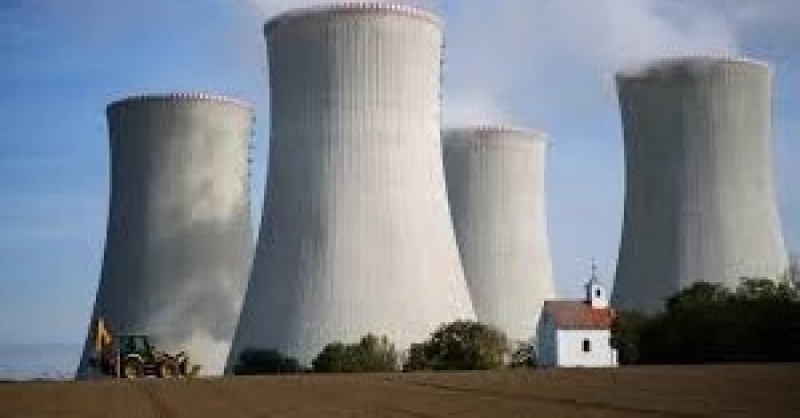- Hadi is no more, state mourning on Saturday: CA |
- Bangladesh capital market falls; weekly turnover lowest |
- Sharif Osman Hadi No More |
- Tarique Rahman to Return Home With Daughter on Dec 25 |
- ILO praises Bangladesh’s labour reforms, new milestones |
Czech Republic Plans $19B Nuclear Expansion to Double Output

The eight cooling towers of the Dukovany nuclear plant now overlook early construction work for two additional reactors, as the Czech Republic advances an ambitious plan to expand its nuclear capacity.
Geological teams are drilling 140 meters below ground to determine if the site can support the $19 billion project, which aims to at least double the country’s nuclear power generation and reinforce its status as one of Europe’s most nuclear-reliant nations.
South Korea’s KHNP won the bid over France’s EDF to build a new plant with two reactors, each producing over 1,000 megawatts. Once operational in the late 2030s, they will join Dukovany’s four existing 512-MW units, dating back to the 1980s.
The agreement with KHNP also gives the Czech Republic the option to add two more reactors at its Temelín facility, which currently operates two 1,000-MW units. Beyond that, the country plans to develop small modular reactors (SMRs).
“Nuclear will likely supply 50% to 60% of our electricity by 2050, possibly even more,” said Petr Závodský, head of the Dukovany expansion project. He emphasized that expanding nuclear energy is crucial for phasing out fossil fuels, ensuring stable power, meeting emissions targets, and supporting growing electricity demand from data centers and electric vehicles.
A Nuclear Comeback in Europe
The Czech program coincides with a renewed European interest in nuclear energy, driven by rising demand and climate goals. Although nuclear power produces radioactive waste, it emits no greenhouse gases.
The European Union has classified nuclear energy as environmentally sustainable under its green investment framework, opening pathways to funding. This benefits nuclear-heavy states including the Czech Republic, Slovakia, Hungary, and France.
Several EU countries are revisiting nuclear policies: Belgium and Sweden have reversed phase-out plans, while Denmark and Italy are reassessing bans. Poland is preparing to join 12 pro-nuclear EU nations after signing a deal with U.S.-based Westinghouse to build three reactors. In 2024, nuclear accounted for 24% of EU electricity.
Britain is also expanding its nuclear capacity, committing £14.2 billion ($19 billion) to build Sizewell C, its first new reactor since 1995, under a cooperation deal with the U.S.
Czech utility CEZ, 70% state-owned, has partnered with Rolls-Royce SMR to develop small modular reactors.
Financing the Project
The Dukovany expansion is expected to cost more than $19 billion. The Czech government plans to acquire an 80% stake and secure a long-term loan, which CEZ will repay over 30 years. The state will also guarantee stable electricity revenue for 40 years. EU approval is anticipated, as nuclear supports Europe’s 2050 climate neutrality goal.
“Without new nuclear units, we simply cannot meet our needs,” Závodský said. “Currently, 40% of our power comes from nuclear and another 40% from coal. Coal must be replaced.”
Previous financial uncertainty stalled expansion. In 2014, CEZ canceled a Temelín reactor tender after the government refused to guarantee funding. Russia’s Rosatom and China’s CNG were excluded from the current Dukovany tender due to security concerns.
The Czech Republic has also ended reliance on Russian nuclear fuel by signing supply deals with Westinghouse and France’s Framatome. The KHNP contract guarantees fuel for 10 years.
Opposition and Concerns
Despite strong domestic support, critics remain. Environmental groups argue the project is too expensive and funds could be better spent on energy efficiency. The Czech Republic also lacks a permanent storage facility for spent nuclear fuel.
Both Dukovany and Temelín plants sit near Austria’s border. Austria, which abandoned nuclear power after Chernobyl in 1986, has long opposed Czech nuclear projects. A major dispute in 2000 over Temelín led to a political standoff and blocked border crossings.
Austria continues to oppose Czech nuclear plans. Its lower house has already rejected the country’s small modular reactor projects.

